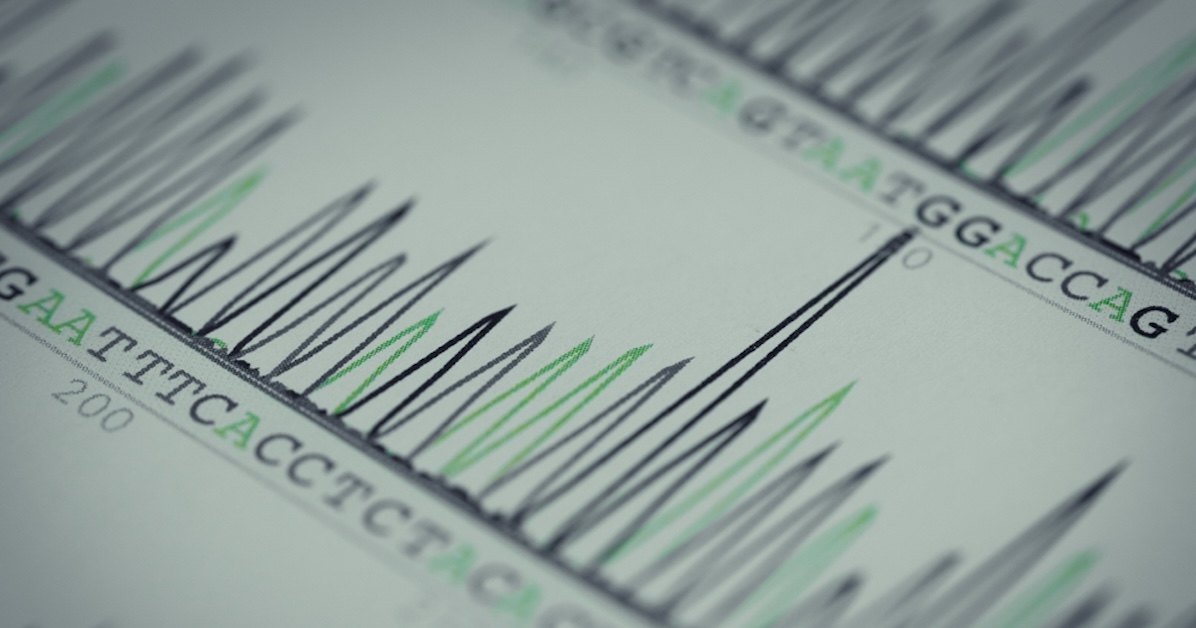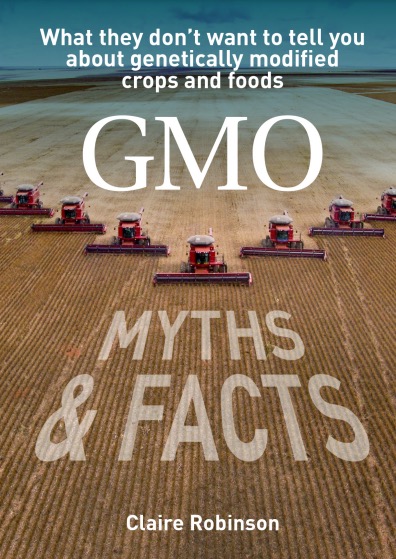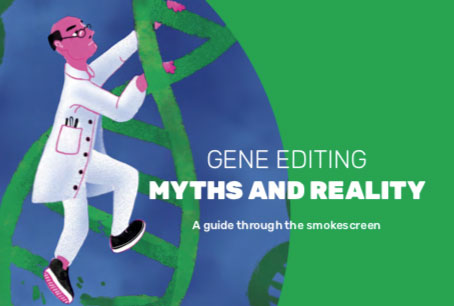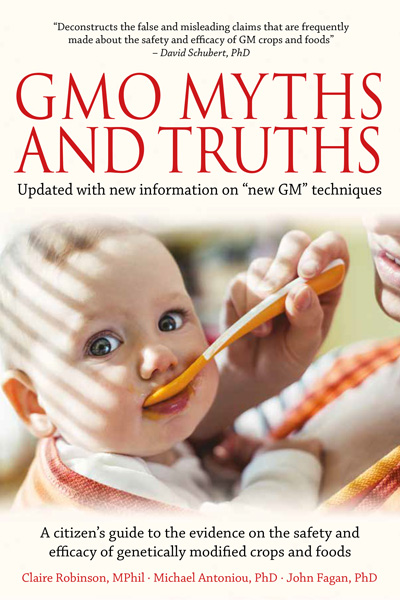 New scientific article warns of loss of consumer trust unless proper analysis is done. Report: Claire Robinson
New scientific article warns of loss of consumer trust unless proper analysis is done. Report: Claire Robinson
Long-read whole genome sequencing is “the only reliable approach to confirm the absence of foreign DNA” in GM gene-edited crops, according to a scientific article in Nature Biotechnology. The article, authored by scientists in the USA and Germany, confirms what GMWatch has been saying for years.
The article’s uncompromising message, in effect, lays down a challenge to the UK government – as well as to other governments, like India and Australia, that have based their deregulation of gene-edited products on the criterion that they do not contain foreign or “novel” DNA.
The UK government’s advisory body ACRE tells developers of gene-edited GMOs that in order for a their products to qualify as “precision bred” and thus escape meaningful regulatory oversight and labelling, there must be “no transgene [foreign gene] elements present, including the gene-editing cassettes, selectable markers and vector genes”. But crucially, ACRE fails to tell developers how they can ensure the absence of foreign DNA. And as far as we know, no government provides this essential guidance.
GMWatch has repeatedly pointed out to the UK government and its advisory bodies that the only method that will provide certainty on the absence of foreign DNA is long-read whole genome sequencing. But the government refuses to require such sequencing because it is frightened of imposing what it sees as an onerous and expensive regulatory burden on the industry.
Paradoxically though, this dereliction of duty by ACRE and its political masters in government only makes things harder for GMO developers. It leaves them in a position of perilous legal uncertainty and makes them vulnerable not only to lawsuits but also to loss of public trust in gene-edited products, in the event that they are shown to contain foreign DNA after all.
That point – though without reference to any specific government – is clearly underlined by the authors of the new article, who are to be congratulated for spelling out some home truths regarding the unpredictable nature of gene editing and the limitations of the methods that GMO developers commonly use to screen gene-edited products for foreign DNA. Addressing the modest (in corporate terms) costs of performing whole genome sequencing, they write, “The decision to invest in WGS [whole genome sequencing] should consider the potential costs that may arise if fragments of foreign DNA are detected. We surmise that the cost related to an overlooked transgene fragment may exceed the cost for WGS by orders of magnitude, and the cost of loss of consumer trust may weigh even more heavily.”
Gene-edited cattle contained foreign DNA
As a cautionary example, the authors cite the chance discovery by US FDA scientists of rogue bacterial DNA, including antibiotic resistance genes, in the genome of gene-edited cattle that had been claimed by the developer company, Recombinetics, to be “free of off-target events”, such as insertion of foreign DNA. It’s clear that the company failed to do long-read whole genome sequencing on their cattle before submitting their data to the FDA.
While it’s true that the FDA’s discovery is “Exhibit A” in any argument for robust and independent regulation of gene-edited organisms, the authors are incorrect in stating that “Discovery of the insertions led to the retraction of approval for human consumption by the Food and Drug Administration in the United States”. Instead, Recombinetics proactively withdrew the cattle from the FDA’s regulatory review process because it was clear they wouldn’t make it past the post with this major screwup in their DNA.
In the wake of the scandal and without having any successful gene-edited product ready for market, Recombinetics went bust, with $7.7 million in total liabilities. Other companies claiming deregulated status on the basis that their gene-edited products contain no foreign DNA may be equally vulnerable if they fail to subject them to long-read whole genome sequencing prior to market release.
This isn’t something that GMO developers in the EU currently need to worry about. Under the existing law, whether an organism is classified as genetically modified does not depend on whether the final product contains foreign DNA. It depends on whether the organism has been subjected to genetic modification procedures. Proponents of gene editing deregulation want to change the law so that it focuses not on the processes used to develop the product, but only on the final product – and that is when the question of the presence of foreign DNA may become crucial.
No foreign DNA = no assurance on safety
As numerous scientists have pointed out, the risks of gene-edited products are not confined to the presence of foreign DNA. Gene editing can cause unwanted mutations, large deletions, or rearrangements of DNA, both at the intended edit site and elsewhere in the genome, that could lead to new, altered biochemistry with the production of novel toxins or allergens in the resulting organism. These changes may or may not involve foreign DNA.
As the authors of the new article point out, a side-benefit of examining a gene-edited product via whole genome sequencing is that it is the best way to uncover these genomic errors.
We would add that it is the job of the conscientious developer to investigate what those errors do – in other words, do they create changes that could pose a risk to consumers or the environment? Currently, in the rush to get new gene-edited products to market, no one is doing the work to answer these questions. And governments, in failing to require developers to do their basic due diligence, are enabling GMO developers to “fly blind”, putting us all in danger.
Whole genome sequencing – just the beginning of safety investigations
The emphasis on whole genome sequencing should not fool us into believing that it’s the end of the safety question. It’s just the beginning and it’s only predictive. While it can show up disruptions in the genome caused by the gene editing and associated processes (such as tissue culture), it cannot tell us their safety implications.
To answer that question, further investigations are needed: transcriptomics, to see how the expression of different genes has changed; proteomics, to see if new toxic or allergenic proteins have been created or existing proteins are altered in their levels; and metabolomics, to see if non-protein toxins have been created.
Even these analyses won’t reveal all unexpected effects of gene-edited foods – for that, they’d need to be tested in whole biological systems, which means live animals or humans.
Given the surprise findings of unexpected toxicity and allergenicity with first-generation GM crops and foods, this level of caution is entirely appropriate for second-generation GMOs.
Why the obsession with “no foreign DNA”?
Given that “no foreign DNA” does not equal “safe”, why are GMO developers, pro-deregulation politicians, and regulators so obsessed with the notion?
The answer is because if a gene-edited organism is claimed to contain “no foreign DNA”, it can be claimed that it “could have arisen naturally” or through conventional breeding and is therefore no more risky than a conventionally bred organism. Regulations are being revised around the world to exempt gene-edited products from regulatory oversight and consumer labelling if they are claimed to be nature-similar in this way. Conversely, if a gene-edited GMO were found to contain foreign DNA, it would be difficult or impossible to argue that it could have arisen naturally – at least, on the scale of agricultural GMO releases.
Accordingly, the notion that gene-edited GMOs do not contain foreign genes and thus “could have arisen naturally” was the basis for the deregulation of gene editing in the UK. This notion also formed the basis of the US government’s attempted deregulation of gene editing via the so-called SECURE rule, issued in 2020.
However, in 2024 the US attempt at deregulation was struck down by a successful legal challenge. The US court's decision sharply criticised the defendant federal agency, the USDA, for its abrupt reversal after more than a decade of recognising the harms of novel genetic engineering technology. While not referring specifically to gene editing, the court held that the agency decision was in “direct conflict with the conclusion of its own experts” and was based on “perception and beliefs” that are merely “asserted as fiat untethered to a clear and sound analysis”.
Gene-edited organisms may well contain foreign DNA
Ironically, the notion that gene-edited GMOs do not contain foreign genes is exactly such a “perception and belief” that is untethered to analysis. When proper analysis is carried out on a gene-edited organism via long-read whole genome sequencing, foreign DNA may well be found to be present. And even when GMO developers do the right thing and use whole genome sequencing to find any foreign DNA, once found, it can prove difficult to remove.
All this suggests why the GMO industry and its friends in government are so reluctant to embrace whole genome sequencing as a method of establishing that gene-edited GMOs are free from foreign DNA. After all, if they are looking properly for rogue genetic material, they might find it, and if they find it, they may not be able to remove it. And the widespread belief in “nature-similar” gene-edited GMOs would be blown apart.
The new article: Huguet-Tapia JC et al (2025). Ensuring effective removal of transgenes before release of genome-edited crops. Nature Biotechnology 43: 1603–1605. https://www.nature.com/articles/s41587-025-02805-7
Technical advice for this article: Prof Michael Antoniou
Image: Shutterstock (licensed purchase)










